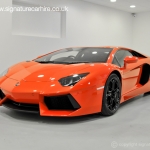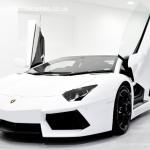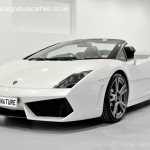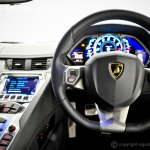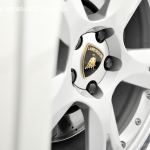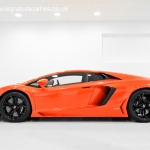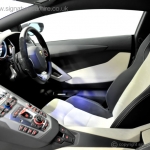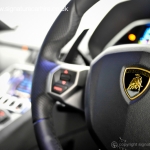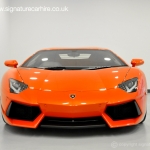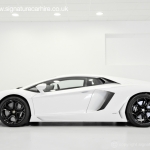 Lamborghini undoubtedly has one of the most humble origins of any car company. As many of you will know, Lamborghini takes its name from Italian motor enthusiast Ferruccio Lamborghini, who owned a prominent tractor manufacturing business with the same name. As a successful businessman and car lover, Ferruccio naturally drove a Ferrari – but when the clutch in his sports car broke, he was disappointed to discover that it was exactly the same part he used in his tractors.
Lamborghini undoubtedly has one of the most humble origins of any car company. As many of you will know, Lamborghini takes its name from Italian motor enthusiast Ferruccio Lamborghini, who owned a prominent tractor manufacturing business with the same name. As a successful businessman and car lover, Ferruccio naturally drove a Ferrari – but when the clutch in his sports car broke, he was disappointed to discover that it was exactly the same part he used in his tractors.
Ferruccio complained to Ferrari and asked for an upgraded part, but instead of taking him seriously they rejected his suggestion, saying that as he was merely a tractor manufacturer he had no idea about high-performance cars. Incensed, Ferruccio went away and started Automobili Lamborghini S.p.A., a sportscar company that would make the kind of cars that would be worthy of his vision and skill. Although its modern success makes this seem like an obvious step, the company’s future was by no means guaranteed- at the time many saw Lamborghini’s venture as a rich man’s folly that was doomed to failure.
Undeterred, Lamborghini built an all-new production facility in Sant’Agata Bolognese that contained the latest equipment, and then had just a few short months after the company’s incorporation in May 1963 to produce a car worthy of being shown at the Turin motor show in November that year.

Using a V12 engine built by Giotto Bizzarrini, who had worked extensively with Ferrari, and a chassis designed by Giampaolo Dallara and Giampaolo Stanzani, Lamborghini produced the 350GT – which was not only ready in time but which also became an instant classic.
After this, success came to the company quickly, with many different models designed and produced in the first few years. One of its particular early achievements was to develop engines that were properly suited to fast road cars, rather than simply re-purposing those that were used in track cars. Another landmark moment was a chance meeting at the Turin auto show of 1965 with Nuccio Bertone, which led to the creation of an automotive legend – the Miura. Like many of Lamborghini’s cars, the Miura was named after a type of fighting bull – although the Italian would never reveal exactly why he had chosen this name.
The Miura was a smash hit, and up until 1972 Lamborghini developed an international reputation for the exceptional engineering, speed and ingenuity it displayed in this and subsequent cars. One of the highlights of this period was the Countach, which stunned visitors to the 1971 Geneva Motor Show with its revolutionary sharp lines and low front – something that had a huge impact on the shape of supercars ever since. Unfortunately, however, 1970s trade union issues in Italy, coupled with the fact that the company had become a symbol of excess which was unpalatable after the 1973 oil crisis, led to a decline in Lamborghini’s fortunes.

Ferruccio had sold his stake in the company in 1972, and Lamborghini had all but failed by the late 1970s. It went into receivership, and was entrusted to two wealthy brothers, Jean-Claude and Patrick Mimran, who reversed the company’s fortunes over the next ten years, ensured new production models were sold and tactical investments were made. Then, in 1987, they sold the company to Chrysler. The American company injected yet more lifeblood into Lamborghini, and in its early years of acquisition developed popular Formula 1 engines that were in huge demand by teams such as Lotus.
On the roadcar side, Lamborghini presented the successor to the Countach in 1990, which was stunning, arrogantly uncompromising in design and very powerful. It was, of course, the Diablo, which was to once again make Lamborghini a name to conjure with. Chrysler, however, sold the company in 1994 and, after four years with an Indonesian firm, it was bought by Audi in 1998.
Under Audi the next great Lamborghini was launched: the Murciélago, which boasted an incredible 580BHP from its magnificent V12 engine. This was soon followed by the Gallardo in 2003, with its top speed of almost 190MPH, and then the Murciélago Roadster, which introduced a brand new style for the company. A Miura concept also debuted in 2005, showing in its sleek design the original and subsequently consistent brilliance of the Lamborghini team.
True to Ferruccio Lamborghini’s original passion, Lamborghini have never stopped innovating and updating their cars with newer, better models. As such, the stunning, futuristic Aventador replaced the Murciélago in 2010, and the equally beautiful Huracán LP610-4 will shortly be roaring along our roads to replace the Gallardo.

If you’d like to experience the evolution of Lamborghini for yourself, and benefit from over 50 years of Italian passion, vision and engineering, then click on our Lamborghini pages for details of the amazing cars you can hire.


